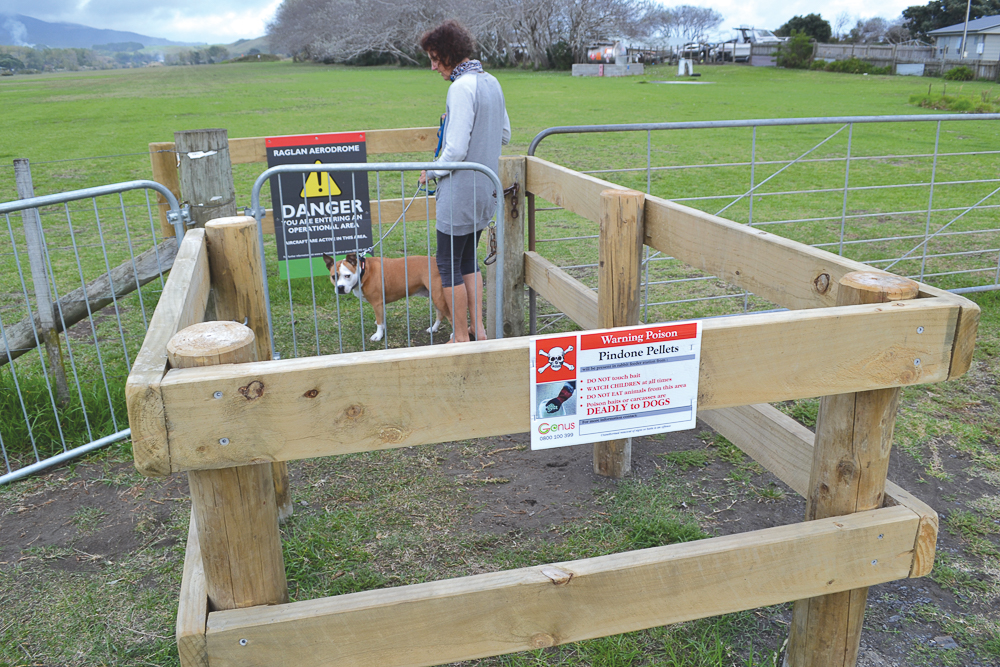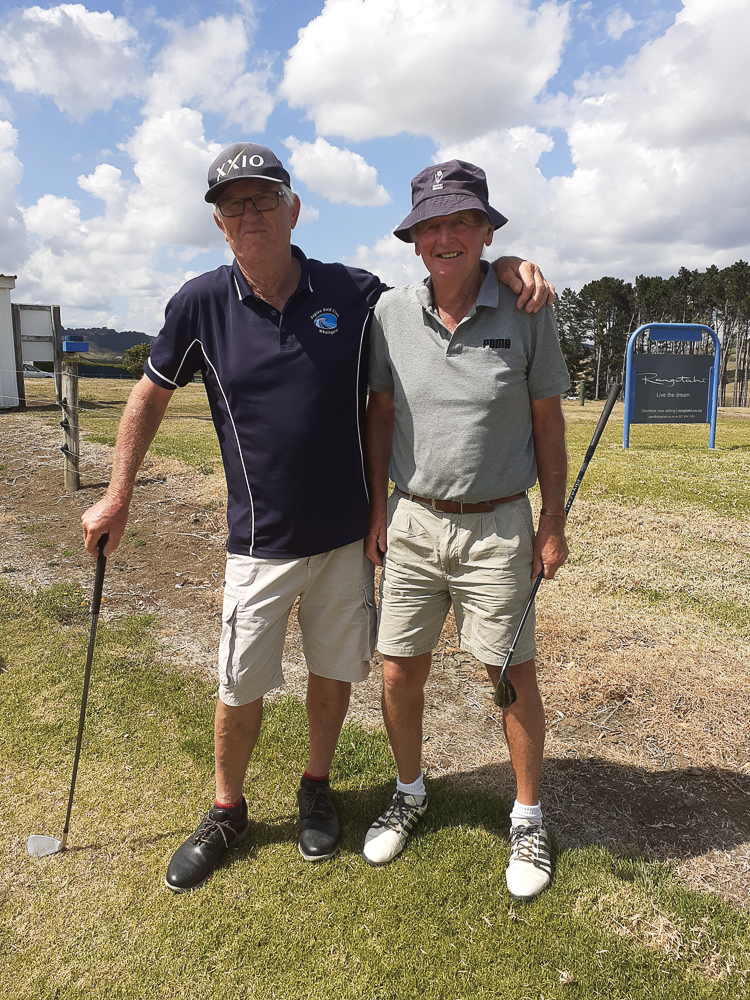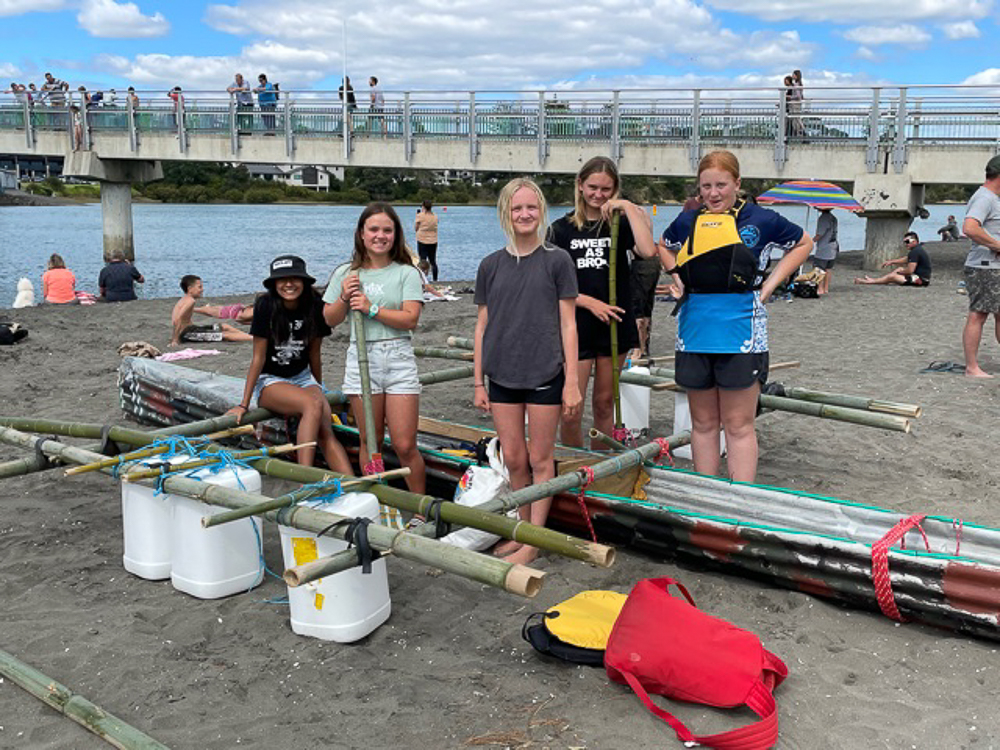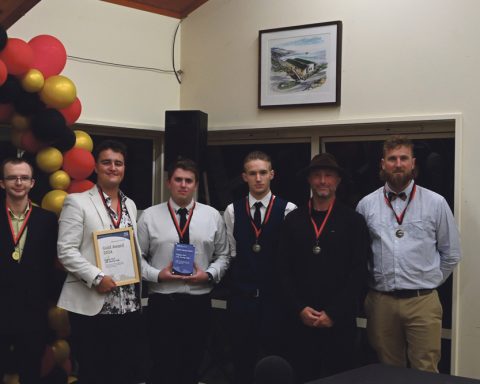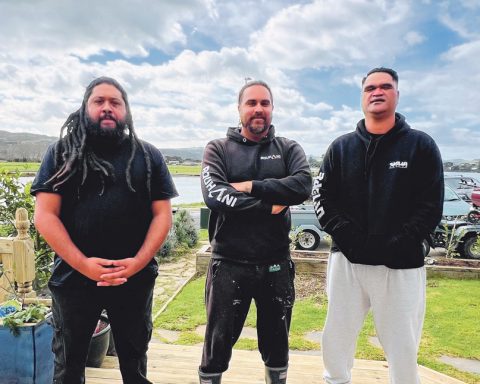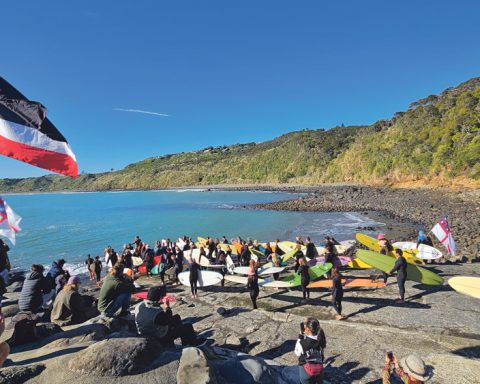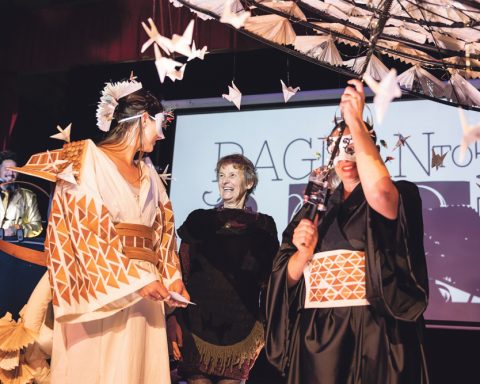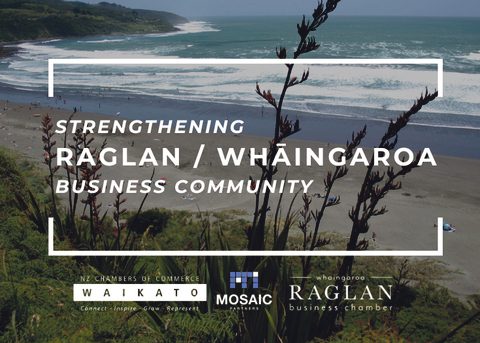The writing looks to be on the wall – or in a bureaucratic three-page report, to be specific – for all those Raglan walkers and dog owners who cross the local airfield each day.
And though the Raglan Community Board’s been put on a short leash of three months to come up with some sort of compromise, Waikato District Council’s intention is clear: it wants people and their pooches gone for good from what has effectively become a popular recreational area for locals.
No wall as such is envisaged in the council’s plan to prohibit the general public. Instead it intends to extend the existing 1.2 metre tall stock fence along the beach-side boundary of the airfield and to remove pedestrian access gates – effectively sealing off the facility to ratepayers and residents who directly or indirectly help fund its upkeep.
It also plans signage along the lines of “Operational area: all unauthorised access prohibited”.
The report talks of retaining access to the beach beyond the airfield by providing a perimeter trail around the airfield.
However an accompanying map appears to show that pedestrian access could be restricted to a short track running from somewhere near the main entrance to Raglan Holiday Park Papahua along behind the row of trees that typically shelter any parked planes then out onto the beach well west of the wartime concrete bunker.
Raglan West residents would be in for a circuitous walk to get to the beach that way.
At the same time, the current airfield access point near the holiday park entrance would be kept for access to and from planes only. As one member of the public cynically observed at last week’s meeting, Raglan is running out of recreational space already, yet “Aucklanders are flying in for a latte”.
The council proposals – which sparked a spirited debate at last week’s community board meeting and then a furore on social media – have come out of a fatal mid-air accident near Hood aerodrome in Masterton back in June 2019. The pilots of the two light aircraft involved both died but there was no wider public risk or involvement in the tragedy.
There is mention however in the council report to the Raglan Community Board of the Civil Aviation Authority subsequently issuing a notice to all aerodromes about the need for safety and complying with relevant legislation.
The exact wording of the CAA warning isn’t detailed but clearly it’s been sufficient to spook Waikato District Council staff into engaging an aviation consultant to inspect and “audit” the Raglan airfield.
Council open spaces team leader Duncan MacDougall acknowledged the ensuing safety proposals were “likely to be unpopular” but said the council must comply with the 1990 Civil Aviation Act and the 2015 Safety at Works Act.
“Health and safety is really important to the (council’s) executive leadership team. We have to, as far as reasonably practicable, stop people from crossing the airfield,” he added.
Another senior council staffer at the community board meeting went so far as to talk of being liable to imprisonment if she did not make all efforts to comply with the legislation.
Community board member Chris Rayner, who helped reshape the recommendations back to council, posted on Raglan Notice Board later that “they give us three months to educate the wider community who have been crossing the airstrip for years that we all now need to walk around the landing area and should no longer walk across the middle of the runway”.
He added, optimistically: “I hope we can together achieve a balance between plane and pedestrian users without the need for more fences and removing public access away from what has been a well-functioning space for many years.”
The community board has also recommended to the infrastructure committee that further investigation is undertaken into the council’s legal obligations to own and operate the airfield.
The council warns that if the community wishes to disestablish the airfield, it will be a long term process that could take years. This, it adds, is because of the “complicated way” the land was acquired (it was taken from local Māori under the Public Works Act for a wartime airstrip).
AT
